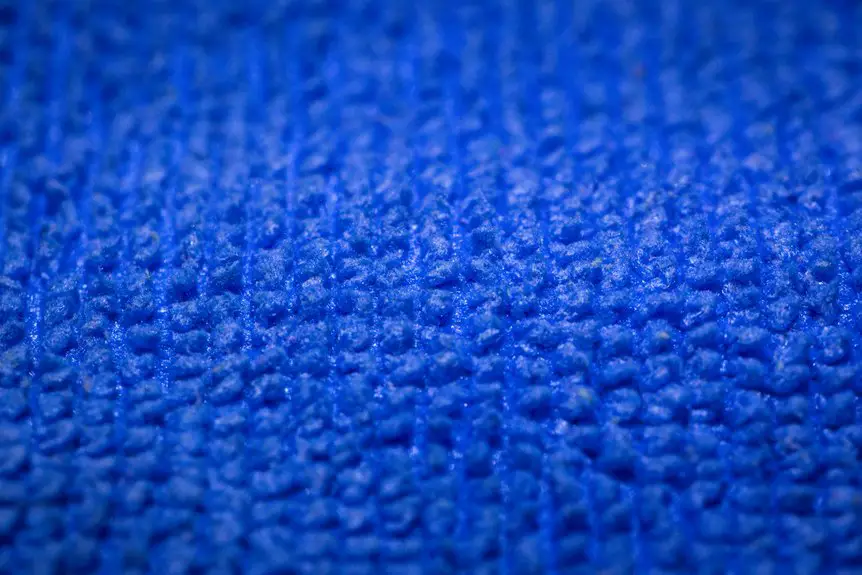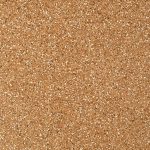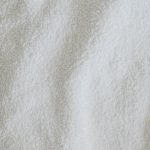You might not realize that the way fabric is constructed—whether woven or knitted—can drastically change how it handles moisture. This difference affects more than just comfort; it influences how quickly sweat evaporates and how breathable your clothing feels during activity. Understanding these distinctions can help you choose fabrics that keep you dry and comfortable, especially when you’re active. So, what exactly makes knit fabrics excel at moisture-wicking compared to woven ones?
Table of Contents
Key Takeaways
- Knit fabrics have looped yarns that enhance moisture-wicking by allowing better airflow and faster sweat evaporation.
- Woven fabrics have tightly interlaced threads that slow moisture transfer and reduce breathability.
- Knits excel in stretch, breathability, and quick drying, making them ideal for activewear.
- Woven fabrics offer durability but typically require treatments or blends to improve moisture management.
- Fabric structure significantly impacts moisture retention, evaporation rates, and overall moisture-wicking effectiveness.
Understanding Fabric Construction: Weave vs. Knit
Fabric construction plays an essential role in how materials handle moisture, and understanding the difference between weave and knit is key.
When you look at fabric types, woven fabrics are made by interlacing threads at right angles, creating a tight, structured surface. This structure limits moisture transfer, often making woven fabrics less breathable.
On the other hand, knit fabrics are created by looping yarns together, which results in stretchier, more open textures. This openness allows moisture to move through the fabric more easily.
How Fabric Structure Influences Moisture-Wicking
Because moisture-wicking depends largely on how a material channels sweat away from your skin, the structure of the fabric plays a crucial role in its effectiveness.
When you choose fabric, consider how its construction influences moisture movement. Different fiber types interact with the fabric’s structure, affecting moisture retention and evaporation rates.
For example, tightly woven fabrics tend to trap moisture longer, while certain knit structures allow sweat to spread quickly across the surface, speeding evaporation.
You’ll find that the spaces and loops in knit fabrics create pathways that help moisture move away from your skin more efficiently.
Understanding this helps you pick materials designed to keep you dry and comfortable, especially during activities that make you sweat.
Comparing Moisture-Wicking Performance of Knitted and Woven Fabrics
While both knitted and woven fabrics can manage moisture, they do so in distinct ways that affect your comfort.
Knitted fabrics excel in knit performance, thanks to their looped structure that traps air and allows moisture to move quickly from your skin to the fabric’s surface. This makes them great for activewear, where breathability and quick drying matter most.
Knitted fabrics trap air and wick moisture swiftly, ideal for breathable, quick-drying activewear.
On the other hand, woven fabrics offer weave benefits like durability and structured support. Their tighter construction slows moisture absorption but helps distribute sweat evenly across the fabric, preventing localized dampness.
When choosing between the two, consider how you’ll use the garment: knit performance suits high-movement activities, while weave benefits shine in more structured, less intense settings.
Understanding these differences helps you pick the best fabric for your moisture-wicking needs.
Enhancing Woven Fabrics for Improved Moisture Management
If you want woven fabrics to handle moisture better, manufacturers have several tricks up their sleeves.
You can enhance moisture management by focusing on these key strategies:
- Fiber Treatments: Applying hydrophilic or moisture-absorbing finishes boosts the fabric’s ability to pull sweat away from your skin, speeding up evaporation.
- Fabric Blends: Combining natural fibers like cotton with synthetic fibers such as polyester improves both breathability and moisture-wicking performance, balancing comfort and function.
- Weave Density Adjustments: Loosening the weave can increase airflow, helping moisture evaporate faster, while tighter weaves provide durability but may need additional treatments to perform well.
Selecting the Right Fabric for Your Moisture-Wicking Needs
How do you choose the best fabric to keep you dry and comfortable during activity? Start by focusing on fabric blends designed to balance moisture-wicking and breathability.
Pure cotton, for example, has high moisture retention, making it less ideal for intense workouts. Instead, look for blends combining synthetic fibers like polyester or nylon with natural fibers. These blends enhance moisture management by pulling sweat away from your skin and allowing it to evaporate quickly.
Knit fabrics, with their loops, often provide better stretch and airflow, while woven fabrics tend to be more durable but less breathable.
Ultimately, selecting the right fabric means considering the activity intensity, climate, and how much moisture retention you can tolerate. Choosing smart fabric blends guarantees you stay dry and comfortable throughout.
Frequently Asked Questions
How Does Fabric Weave or Knit Impact Environmental Sustainability?
You’ll find fabric weave or knit influences environmental sustainability by determining how sustainable materials and eco friendly processes are used. Choosing the right structure helps reduce waste, saves water, and supports greener production methods effectively.
What Production Differences Exist Between Woven and Knitted Moisture-Wicking Fabrics?
You’ll find woven fabrics use interlacing threads with precise production techniques, while knitted fabrics loop yarns for stretch. Knits generally boost moisture absorption, affecting production speed and fabric properties, so choose based on your moisture-wicking needs.
Are There Cost Differences in Manufacturing Woven Versus Knitted Moisture-Wicking Fabrics?
They say, “Time is money,” and when you consider manufacturing costs, knitted fabrics usually offer better production efficiency, so you’ll often find them cheaper to produce than woven ones, saving you money in the long run.
How Do Fabric Weave and Knit Affect Garment Durability Over Time?
You’ll find woven fabrics offer greater fabric strength and wear resistance, making them more durable over time. Knitted fabrics, while stretchier, tend to wear out faster due to their looser structure and less fabric strength.
Can Fabric Weave or Knit Influence the Aesthetic Appearance of Moisture-Wicking Clothing?
You’ll notice fabric weave or knit influences texture variation, giving moisture-wicking clothes unique looks. They offer design flexibility, letting you choose styles that balance performance and aesthetics for a personalized, stylish athletic wardrobe.







